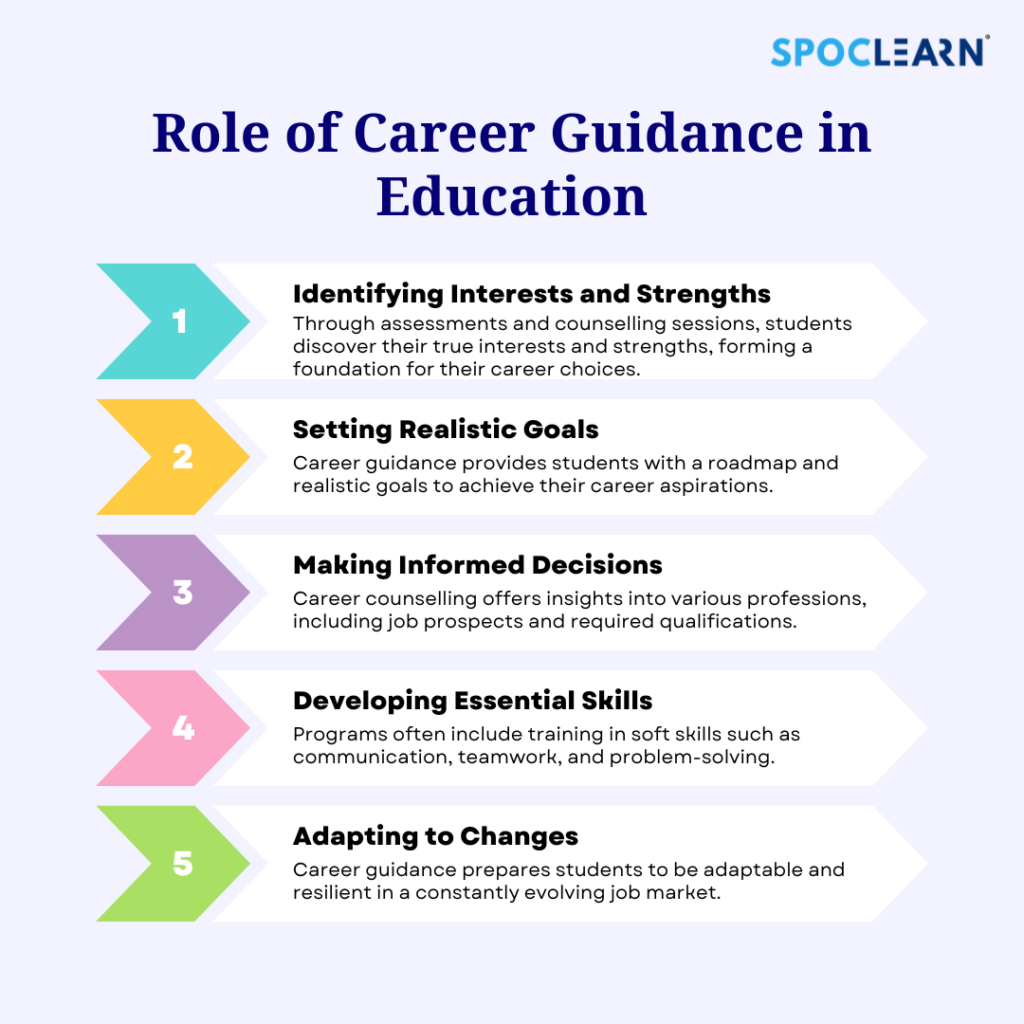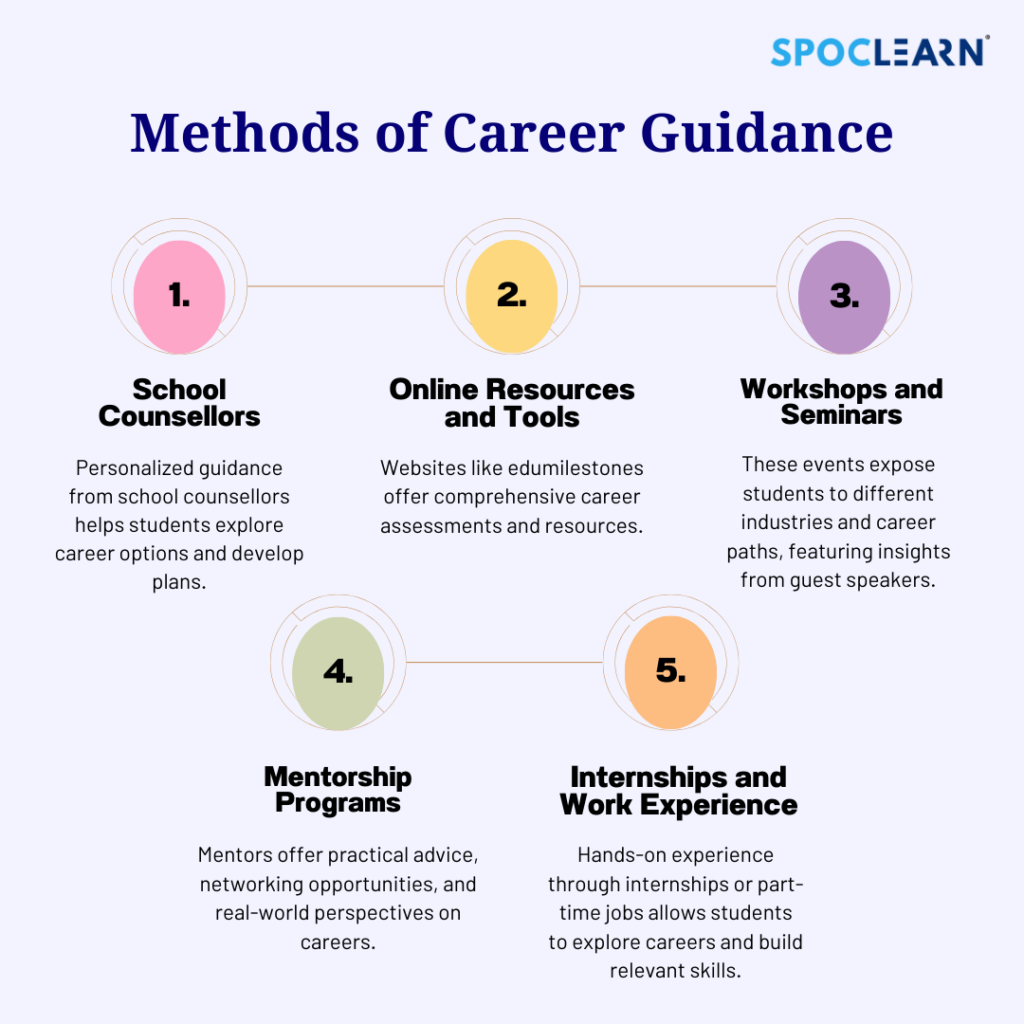Table of Contents
ToggleIn today’s rapidly evolving world, the concept of a lifelong career has transformed dramatically. With industries constantly changing and new career paths emerging, students often find themselves at a crossroads, unsure of which direction to take. This uncertainty underscores the critical need for effective career guidance. Proper career counseling can equip students with the knowledge, skills, and confidence required to make informed decisions about their futures. This article delves into the significance of career guidance, its benefits, and the various methods through which students can receive this crucial support.
The Role of Career Guidance in Education
Career guidance is an integral part of the educational experience. It extends beyond helping students choose a career; it encompasses understanding their strengths, weaknesses, interests, and values. Effective career counseling helps students to:
- Identify Interests and Strengths: Through various assessments and counselling sessions, students can uncover their true interests and innate strengths. This self-awareness is the foundation upon which they can build a fulfilling career.
- Set Realistic Goals: Career guidance helps students set achievable goals. It provides them with a clear roadmap, highlighting the steps needed to reach their desired career paths.
- Make Informed Decisions: With a plethora of career options available, making an informed decision can be daunting. Career counseling offers valuable insights into different professions, including job prospects, required qualifications, and potential career paths.
- Develop Essential Skills: Career guidance programs often include training in soft skills, such as communication, teamwork, and problem-solving, which are essential in any career.
- Adapt to Changes: The job market is constantly evolving. Career guidance prepares students to be adaptable and resilient, enabling them to navigate changes in their chosen fields effectively.

Methods of Career Guidance
Career guidance can be provided through various methods, each offering unique benefits. These methods include:
- School Counsellors: Many schools have dedicated career counselors who provide personalized guidance to students. These professionals help students explore different career options and develop a plan to achieve their goals.
- Online Resources and Tools: The internet offers a wealth of information and tools for career guidance. Websites like Edumilestones provide comprehensive career assessments and resources that students can access anytime.
- Workshops and Seminars: Attending career workshops and seminars can expose students to different industries and career paths. These events often feature guest speakers who share their professional experiences and insights.
- Mentorship Programs: Pairing students with mentors in their fields of interest can provide invaluable guidance and support. Mentors offer practical advice, help students network, and provide a real-world career perspective.
- Internships and Work Experience: Gaining hands-on experience through internships or part-time jobs allows students to explore different careers and build relevant skills. This practical exposure is essential in making informed career decisions.

The Benefits of Career Guidance
Effective career guidance offers numerous benefits for students and the broader society. These benefits include:
- Increased Job Satisfaction: When students choose careers that align with their interests and strengths, they are more likely to find job satisfaction and fulfillment. This leads to higher productivity and overall well-being.
- Reduced Dropout Rates: Students who receive career guidance are less likely to drop out of educational programs. They have a clear understanding of the relevance of their studies to their future careers, which keeps them motivated.
- Better Workforce Alignment: Career guidance ensures that students enter careers that match their skills and interests. This alignment benefits employers by reducing turnover and increasing job performance.
- Enhanced Economic Growth: When individuals are well-matched in their careers, they contribute more effectively to the economy. A well-guided workforce is more innovative, efficient, and productive.
- Personal Development: Career guidance fosters personal growth by helping students understand themselves better. It encourages them to pursue continuous learning and development, which is crucial in today’s dynamic job market.

Conclusion
In conclusion, career guidance is a vital component of education that helps students navigate the complexities of the modern job market. By providing the necessary tools and support, career counseling empowers students to make informed decisions, set realistic goals, and pursue fulfilling careers. As the job market continues to evolve, the importance of career guidance will only grow, making it an essential element in preparing the next generation for success.
Ensuring that students have access to comprehensive career guidance will not only benefit individuals but also contribute to the overall prosperity of society. Therefore, it is imperative for educational institutions, policymakers, and communities to prioritize and invest in robust career guidance programs.
